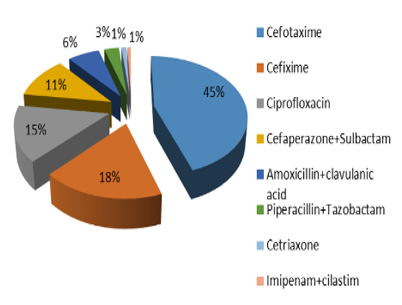Abstract
Surgical site infection is a major complication following surgery affecting up to 50 % of operated patients which can be prevented by appropriate antibiotic prophylaxis. Hence this study aims to investigate the pattern of the prophylactic antibiotic usage in patients undergoing elective surgery and to assess the percentage of drugs included in the National List of Essential Medicines (NLEM). This is a Prospective study conducted at Saveetha Medical College and Hospital from April 2018 to April 2019 included medical records of 1093 Patients above 18yrs of age including both sex (male and female) who has undergone elective surgery in Department of General Surgery. Patient's demographic data and comorbidities was also collected and verified for antibiotic prophylaxis, i.e. choice and duration of antibiotics, time of administration, intra-operative dosing, choice and duration of the postoperative use. Pediatrics, Neonatal Surgeries, Pregnant and lactating women were excluded from this study. The obtained data was analyzed, and conclusions were drawn with the help of SPSS analysis software. The results shows Third-generation cephalosporin's injection Taxim (Cefotaxime) was mainly used preoperatively in 486(44.46%) patients by intravenous route followed by cefixime-191(17.47%),ciprofloxacin-161(14.73%). This study revealed that third-generation cephalosporin Cefotaxime was considered as the main pre and post-operative drug, which is based on surgeon's experience, type of surgery and local antibiotic resistance pattern. Various measures like the development of local hospital Policy, surveillance on SSIs, hospital antibiotic policy, promoting good surgical techniques and strict asepsis in the operating theatre, usage of single antibiotics, and completion of course of antibiotics can prevent the emergence of multi-resistant organisms.
Full text article
Authors

This work is licensed under a Creative Commons Attribution-NonCommercial-NoDerivatives 4.0 International License.

